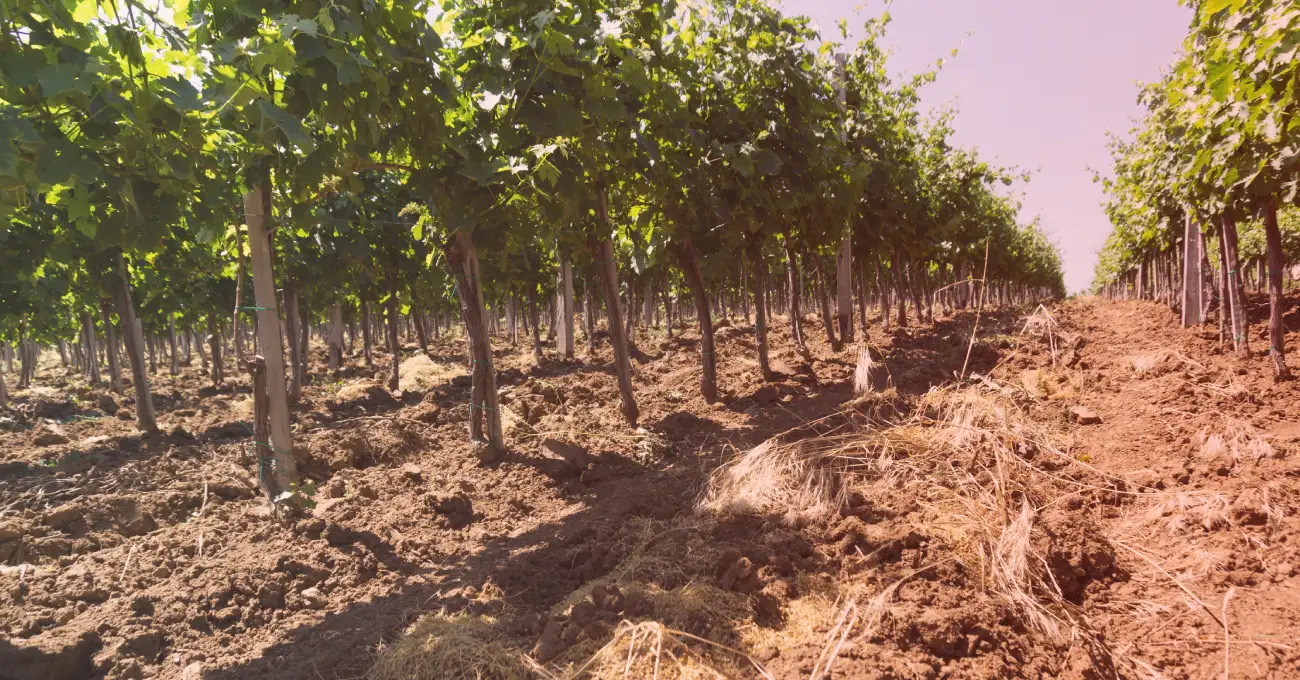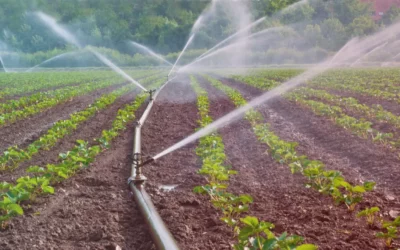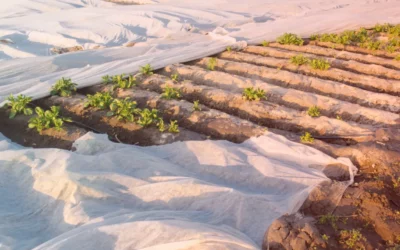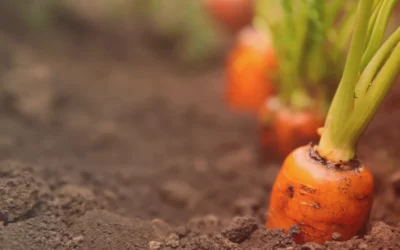Vineyard Soil Testing is Evolving Thanks to IoT Tech
Soil quality is one of the key ingredients to good wine. It can give a vineyard a unique identifier and make or break the final product. As such, it’s a passionate discipline of any serious winemaker, but the complexities of soil science make it a tricky one to master.
Soil sampling provides invaluable data on changes in factors such as pH, moisture, and organic content for mature vines, and this traditionally means gathering up soil manually and sending samples to the lab.
However, in recent years, smart farming technologies from the Internet of Things (IoT) companies, are allowing farmers much lower latency and higher precision data from their smart devices. These devices are placed around the farm in sampling locations and can notify farmers immediately about changes in conditions.
Smart devices can gather and transmit real-time data across many different aspects of agriculture, including soil qualities and microclimate. This collection of detailed, useful data aids in crop cycle mapping and strategic irrigation for stressing the grapevines; both of which are becoming more difficult with increasingly unpredictable seasons.
For vineyards, this means tracking changes in soil quality much more efficiently and being able to respond to approaching shifts in weather.
Vineyard soil variables
Grapevines tolerate a great range of soils. Still, producing high-quality wine-producing grapes requires aligning certain factors. The climate will play a role in determining which soil is best for grapes since temperature and rainfall will create different conditions depending on the variables of soil quality.
Nutrient content, aeration, irrigation, and even the texture of the soil are some of these key measurable variables in soil control for winemaking. Generally, sandy loam soils offer the best combination of elements favorable to grapes, but vineyards from Bordeaux and Rioja, for example, often get their intense color from clay soils.
Clay maintains its temperature and retains water, which is good for very hot climates. On the other hand, loam can be too fertile, as grapevines do better in response to the stress of nutrient-poor soils. Loam can be blended, or stress can be otherwise provoked by pruning the vines to compensate for this. Stressing with water or nutrient restriction is an important trick to producing quality grapes.
Sandy soils have natural pest resistance and produce lighter wines with less tannin and more aromatics. They’re very well-draining, so it can be better in cooler climates with more rain.
There is no best soil for a vineyard, and as you can see, multiple climatic factors and stressing practices play a role in the production of quality wine and the effects of the soil that it comes from. This is why vineyard soil testing is so important.
Vineyard soil sampling – standard practices
Vineyard soil sampling is meant to accurately reflect the conditions of the soil over a given spatial range. The first stage of soil sampling is to randomly sample. Soil samples taken only in one part of the vineyard or in a non-random pattern may not be a good representation of the overall condition of the soil. Alternatively, a zig-zag pattern that evenly covers much of the area can also be used. The key is to get a uniform distribution of sample locations.
To create sample locations, the vineyard needs to be partitioned into areas with similar conditions. For example, South-facing slopes need to be sampled separately from those facing North. While samples from each area will be homogenized, samples from areas with different conditions shouldn’t be mixed.
These samples are taken from the topsoil but also from the subsurface layer to make sure they reflect the soil in contact with the full root system of the vines. Samples can be separated by topsoil and subsurface; this is roughly the top 6” and 12”, respectively.
Vineyard soil testing usually happens in Spring and Autumn but can be done at multiple times of the year.
Samples of each category are then homogenized, cleared of rocks, then prepared and packaged for lab testing as soon as possible. The lab can then be instructed to test for NPK content, pH, organic matter, and other minerals like Magnesium and Zinc, among others.
This process is more-or-less similar across vineyards and is obviously time-consuming, with high latency in terms of receiving data. With soil moisture content being a useful way to stress grapevines, the drawbacks of this method in monitoring and adjusting moisture content quickly and easily are evident.
Modern IoT methods aim to cut time out of the process of vineyard soil sampling while improving the quality and quantity of data, which can be provided in real-time, as often as necessary.
Modern improvements
Smart farming is working to fill in the gaps in weather forecasts by turning farms into localized weather stations. The microclimate data from smart devices allow farmers to predict patterns much more locally, and, when combined with soil monitoring, they react immediately to changes in conditions in the substrate.
IoT tech can also help automate soil management. Sensors networked into irrigation systems could automatically maintain the optimal moisture content in the soil, based on local or could-based information, by connecting or disconnecting the irrigation system in response to the soil requirements.
Stressing vines with intelligent irrigation methods, backed up by IoT data, save time, water, and energy and improves physical farming processes such as labor scheduling and crop planning. At the same time, IoT systems help anticipate extreme weather events relevant to the vineyard’s specific location.
IoT Tech security guidelines
To get the most out of IoT technology, there are some fundamental security practices that should be followed. These apply not only to vineyard soil testing but across all agricultural applications of smart technologies and cover areas that are often overlooked in developing technologies.
Understanding the basics of IoT security shouldn’t be neglected and it doesn’t have to be overwhelming. With all their promise, smart farming devices’ growing complexity and inter-connectedness can leave open backdoors for bad-faith actors to exploit, so security must be considered.
It’s important to maintain software updates regularly. These updates come with bug fixes and may prevent cyber-attacks. Smart devices can potentially send confidential information across the internet, such as passwords or identification metrics, so closing these loopholes needs to be done regularly, and this is best done by making sure their firmware is up-to-date.
Using strong encryption protocols should further secure data transmission across all networks.
Cyber-security isn’t the only risk. Complex devices with expensive components are at risk of physical interference or theft when left in remote, unmonitored locations across a farm.
Keeping an awareness of the necessity for security when considering your smart tech is important, and responsible suppliers will be happy to educate customers on this.
Conclusion
The improvements in smart farming technology offer great promise to the agriculture sector as a whole. Vineyards with specific soil requirements can greatly benefit from real-time and location-specific data to schedule fertilization and irrigation events. This saves on resources and overheads while improving practices.
The strength of the technology is in gathering and utilizing vast amounts of local weather data specific to each farm.
——
Benchmark Labs is the first of its kind in AI-driven, localized weather forecasting technology that utilizes machine learning, generating superior accuracy in forecasts with fewer sensors. Sign up now to learn more and get access.
Recent Posts
Factors Influencing Evapotranspiration and How to Measure it with AI
[dssb_sharing_button icon_bg="#636979" _builder_version="4.16" _module_preset="default" background_color="#324155"...
Frost Forecast Is Going To Change With IoT Devices and Machine Learning
[dssb_sharing_button icon_bg="#636979" _builder_version="4.16" _module_preset="default" background_color="#324155"...
Advantages and Disadvantages of Conservation Tillage Methods
[dssb_sharing_button icon_bg="#636979" _builder_version="4.16" _module_preset="default" background_color="#324155"...




